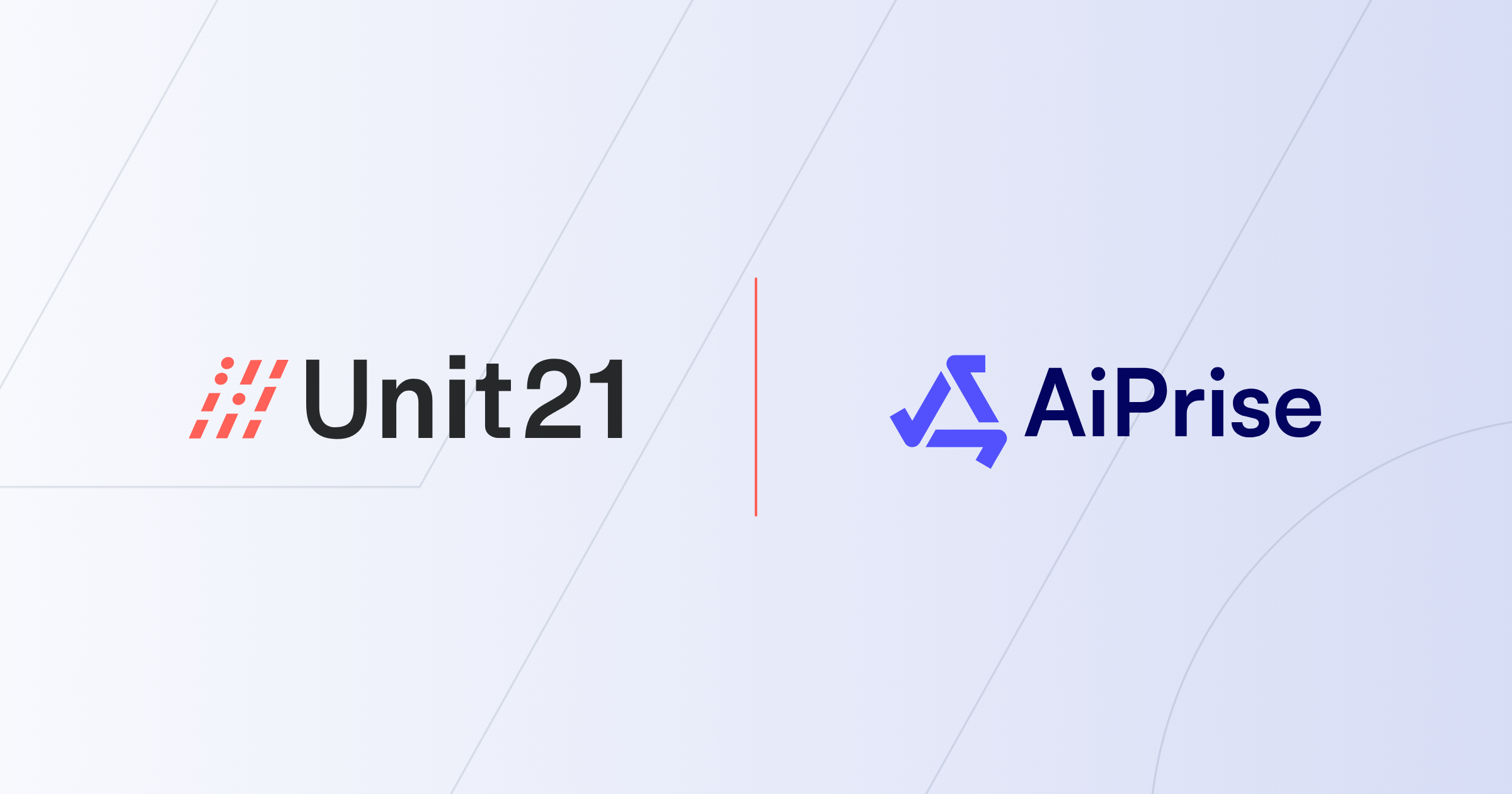
.png)
Dickens might have been writing about today’s financial services world. On one hand, the innovation fueling the growth in ideas and technology has landed us in some of the best of times. And yet, with each new leap forward, we are also potentially creating more opportunities for the bad actors to squeeze in. So what can financial organizations do to ensure they remain in the “age of wisdom” and not, well, the other one?
The Crucial Link Between Account Tenure and Fraud Detection
Our last post in our Fraud Files series - where we offer unique insights into fighting fraud and ensuring compliance gleaned from data gathered on the Unit21 platform - explored the link between account tenure and the likelihood of fraudulent activity being detected. We found the rate of true positives for accounts in their first seven days stands at 41.62%, which drops by more than half to 17.53% for accounts that have been active for over 90 days.
The data showed that as account tenure increases, the amount of bad actors detected decreases. This could be for many reasons - perhaps fraudsters were caught early, or organizations were going through a period of learning and rules calibration - but one thing remains true: consistent monitoring during those early days of higher true positives is crucial.
Fraud Detection Dynamics: Banks and Credit Unions vs. Fintech Platforms, the First 14 Days
We’ve established that account monitoring is essential, and data is showing just how important it can be in the early days. What does that mean for traditional financial institutions and fintechs? Is there a difference?

Banks and Credit Unions:
Our analysis shows that the rate of true positives for traditional bank and credit union accounts is very high at 75% on day 1. This is followed by a steep drop between Day 1 and Day 4 with a relative decline of around 54%. While true positive rates rise after Day 4, the overall downward trend continues, as between Day 7 and Day 14 when the relative decline is over 42%. Finally, a zoomed-out lens from Day 1 to Day 14 shows the rate of true positives declines by almost half from nearly 75% to just below 26%.
Fintechs:
Compare that with the rates for fintech organizations. Here we see a slight initial decline within the first day of account opening, from 36.89% to 34.87% (and of course, it’s interesting to note that the true positive rate is already lower than traditional banks starting from Day 1). We then see the rate of true positives rise at a somewhat steady rate with a relative increase between Day 2 and Day 7 of over 27%, and between Day 7 and Day 14 of slightly over 6%. Unlike banks, however, fintech platforms show a relative increase between Day 1 and Day 14 of almost 23%
We can clearly see the divergence in true positive fraud rates between these traditional banks/credit unions and fintech companies. Banks show an initially high fraud rate that quickly declines, while fintech platforms seem to peak later in the account tenure.
What does a customer get at the end of 14 days…?
Of course, not all financial products are created equal. They may not be as polar opposite as the best and the worst of times, but different products will, of course, fall under processes, controls and compliance standards before delivery to the end-user. So with this 14-day period in mind, here’s a high-level snapshot of what customers might be able to expect within this time period.
What does it all mean?
We can find three important takeaways to this analysis:
- Distinct fraud dynamics - there is a stark contrast in fraud trends between traditional banks/credit unions and fintech platforms with accounts in their first 14 days of opening. Traditional banks see high fraud rates on Day 1, which rapidly decrease; fintech platforms, on the other end, show a different pattern by starting lower, and then having a delayed peek of fraud rates around Day 11. In short, the first line of defense at banks and credit unions is to be - and stay - vigilant from Day 1, while those fighting fraud at a fintech platform must understand how fraud evolves based on their product/feature offerings.
- Risk window variation - Since the “highest risk” period for fraud in fintech platforms is not immediate, but occurs within a timeframe of Day 8 to Day 15, with a peak of over 50% of daily fraud rates around Day 11. This speaks to the importance of onboarding account monitoring and the importance of a platform like Unit21 to monitor activity with custom rules to prevent fraud.

- Influence of Operational Practices - The observed patterns may reflect the operational differences between traditional banks and fintech companies. Banks, with their instant access to a variety of transaction tools, may deter fraudsters after initial attempts, whereas fintech platforms may present delayed opportunities for fraud due to different customer verification processes and the gradual rollout of account features. It is also worth bearing in mind that banks tend to use legacy systems to identify and fight fraud, whereas fintech platforms are more likely to opt for solutions that are more agile and technologically advanced.
Of course, recognizing that perfect prevention is not always possible. To this end, you must implement robust, multi-layered strategies with the right tools that dynamically adjust to various risk signals. A waterfall strategy can help you efficiently block bad actors, enhancing security as your customers or members sign up, without compromising user experience.

The Takeaways
Fintech Has Fewer Regulations
A fintech bank uses new technologies while traditional banks still resort to archaic systems. This allows fintech services to be more attractive due to their agility and innovation. However, fintechs often lack the proper IT security and regulatory certainty compared to banks, which tend to have financial regulations in place and huge monetary deposits.
Bank vs Fintech
When comparing bank vs fintech, fintech companies use new technologies to enhance user experiences and streamline transactions. Despite this, traditional banking still holds a strong presence in financial services, offering stability and extensive regulatory frameworks. The difference between fintech and traditional banking lies in their approach to technologies and customer needs. Fintechs are generally more agile and innovative, while banks provide robust security and financial assurance.
Customers and Technologies
Fintechs cater to customer needs by providing innovative solutions and easier access to financial services. However, banks maintain customer trust through their extensive experience and regulatory compliance. Fintech companies use new technologies to improve service delivery, while banks often stick to tried-and-tested systems, which can be slower to innovate but offer proven reliability.
Security and Financial
While fintechs can be more vulnerable due to a lack of proper IT security and regulatory certainty, banks tend to have stringent security measures in place to protect customer data and financial transactions. Both fintechs and traditional banks offer financial services, but fintechs are generally more focused on leveraging technology to provide faster and more convenient solutions.
Banking and Business
Traditional banking offers a stable and regulated environment, while fintech banking is characterized by rapid innovation and new technologies aimed at improving user experience. Banks have huge monetary deposits and offer a wide range of financial services, ensuring stability and trust among their customers. Businesses must consider the benefits of fintech banking’s innovation against the reliability of traditional banking. Companies like Sofi illustrate how the financial industry is evolving to meet diverse needs in commerce, payment, loans, and sustainability.
As data shows, early monitoring is key to success, whether you are a traditional bank, credit union or a fintech, considering how rates move just within the first two weeks of an account opening. But the important thing to remember: it doesn’t stop there. True positive rates for fraud will continue to rise and fall throughout the entire lifecycle of an account, especially as new technology develops and new opportunities are created for fraudsters. While banks are usually diligent in this, fintech offerings should keep in mind that up-front KYC is not enough; they, too, need to be constantly monitoring.
In this tale of two fraud trends, one thing remains shared - the need for ongoing vigilance
Don't let fraud undermine the trust in your financial services. Contact us for a demo to discuss new fraud prevention techniques today and secure your operations for tomorrow.
Subscribe to our Blog!
Please fill out the form below:




.png)

